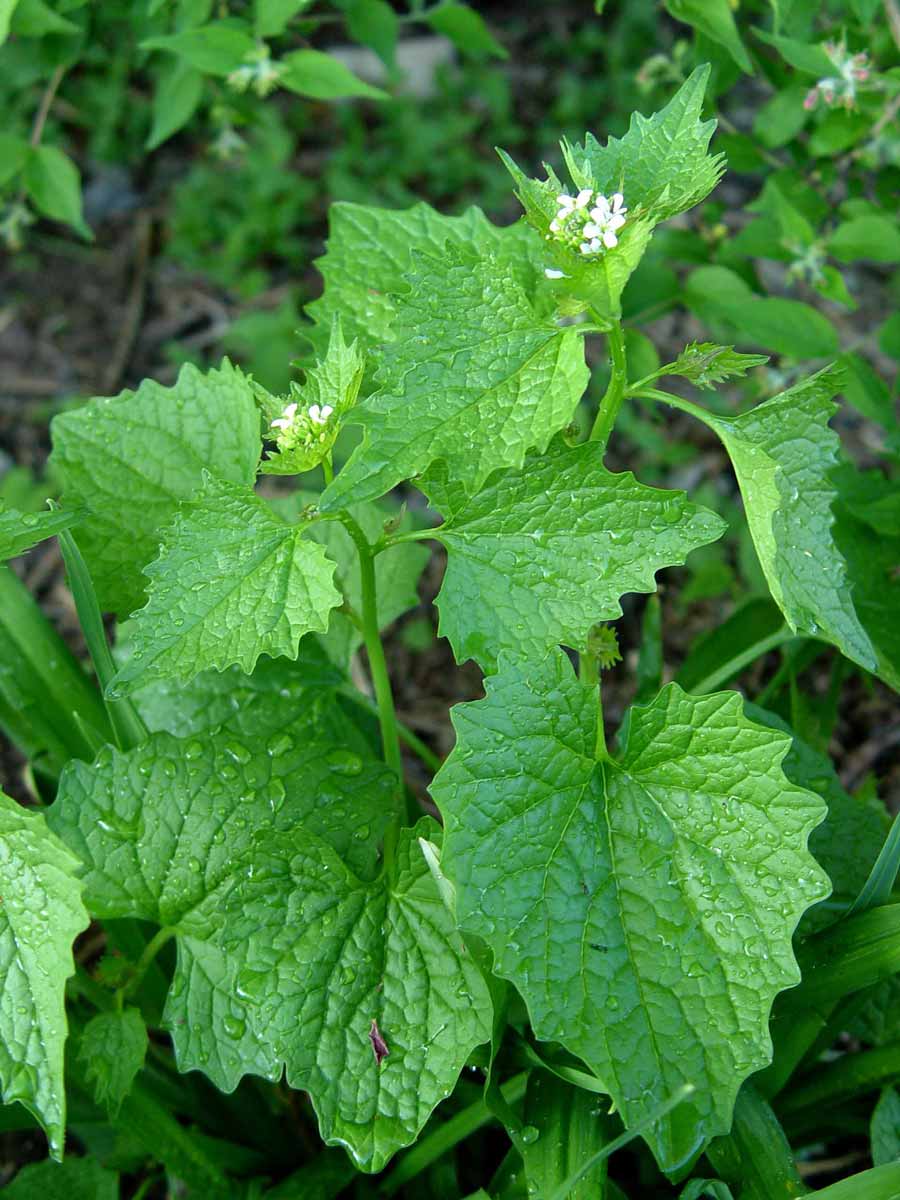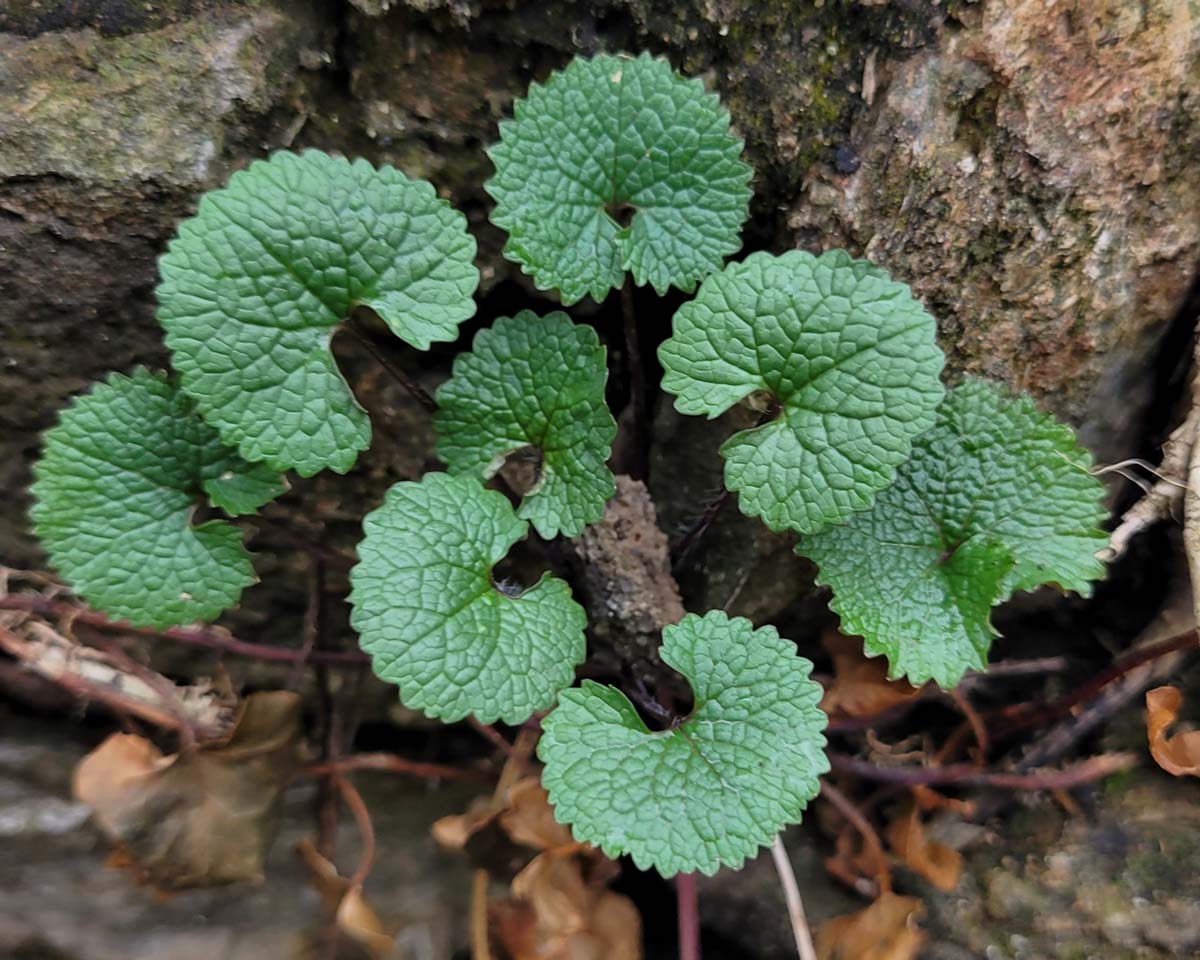Weed Control and the Life Cycles of Weeds
Some weeds come and go in a single season, some come back every year, and some grow into long-lived trees. Knowing which kind of weed you have is the key to controlling it.
Garlic mustard is a textbook example of a once-much-used plant that ended up spreading so well that it became one of America’s most common weeds.
Early U.S. settlers brought this biennial plant from Europe, where it had been used for thousands of years as a garlic-like food seasoning and for medicinal uses, including as a wound treatment, a diuretic, and a disinfectant.
But because garlic mustard is so prolific a seed-producer – seed that travels well and stays viable in the soil for five to seven years – it’s spent the past two centuries popping up in disturbed soils and woodland areas from coast to coast. It is an invasive super spreader that sprouts and sets seed throughout the growing season, crowding out other plants to quickly colonize areas.

Garlic mustard’s second-year plants are triangular and heart-shaped, and they produce small clusters of four-petaled white flowers. George Weigel
Garlic mustard (Alliaria petiolata) is a mustard-family plant that gets its specific name from the garlic odor it emits when its leaves are crushed.
It’s also sometimes called poor man’s mustard, garlic root, and hedge garlic or “Jack-by-the-hedge” for its tendency to pop up along old European hedges.
It's a biennial, a plant with a two-year life cycle.
It starts by sprouting from seed in late winter to early spring of the first year, growing into a six- to eight-inch-tall rosette of kidney-shaped leaves throughout the summer.
Those first-year plants often stay green during winter, then resume growth and send up flower stalks the following spring that can reach three to even four feet tall.
Plants produce small clusters of four-petaled white flowers – peaking in May in most of the U.S. – followed by seed pods that carry tiny brown seeds in June. Garlic mustard can produce an average of 500 to 600 seeds per plant. Plants then die after the seeds mature.
The seeds are light enough that they easily travel by wind, water, and on the backs of birds and insects. They germinate well along wood’s edges, roadsides, farm fields, home gardens, and most any disturbed site.
Since garlic mustard is an early-season sprouter, it’s often up and using space and sunlight before other plants can compete. In addition, garlic mustard produces natural chemicals that stunt the growth of would-be competitors (“allelopathy”), especially natives such as trillium, trout lily, and red maple, according to research at the University of Minnesota.
Garlic mustard leaves are triangular and heart-shaped in the second year, but besides that and the four-petaled white flowers, a key identifier is the plant’s garlicky odor.
Garlic mustard grows best in moist sites, but it also tolerates dry conditions and light settings from full sun to full shade.

First year garlic mustard rosette. iNaturalist.org
One of the best ways to control garlic mustard is simply to pull or hoe plants – especially in the first year. Removing first year plants is recommended over cutting or mowing because cut plants are able to re‐sprout and flower again in the same season when mowed.
For garlic mustard plants in the second year, it’s important to get rid of or cut off plants before they flower and have a chance to set seed. Dropped seeds can "feed" the soil bank for five to seven years, even if you eventually get rid of all existing garlic-mustard plants.
A good time to pull garlic mustard (and most other weeds) is when the soil has been softened after a rain. Be sure to bag and dispose of pulled garlic mustard as pulled plants can actually continue flowering and set seed. Do not compost garlic mustard.
Although garlic mustard has a deep taproot, new shoots won’t spread from it as with some weeds if the entire structure isn’t removed. Garlic mustard does not send out invasive runners either.
Plants also can be spot-sprayed with liquid herbicides labeled for garlic mustard. Fall sprays are especially effective on first-year plants, and early-spring sprays are recommended on second-year plants, although applications can be made anytime the foliage is green and growing. Use caution when using liquid weed killers to avoid overspraying desirable plants.
Several weed prevention strategies used together can help to prevent a garlic mustard outbreak:
Many weed varieties sprout when daytime temperatures warm in spring. Early application of a pre-emergent is ideal to get ahead of spring-sprouting of weed seeds. Weed preventers such as Preen – combined with getting rid of existing weeds and filling and mulching bare soil – make up a multi-pronged strategy to stop new weeds in garden beds.
When applied twice a year (spring and late summer to early fall), Preen Extended Control Weed Preventer gives season-long protection against more than 125 kinds of weeds.